3.3 Nonfiction Feature Detective
| Site: | Cowichan Valley School District - Moodle |
| Course: | ELA5, CSS, Sferrazza |
| Book: | 3.3 Nonfiction Feature Detective |
| Printed by: | Guest user |
| Date: | Sunday, 21 December 2025, 8:09 PM |
Learning Target
By the end of this lesson, you should be able to say YES to the following question.
- Can I recognize nonfiction text features?

Video
In the last lesson, you were introduced to nonfiction text features. There are many useful tools that help you to understand what is written, to find information efficiently, and to understand what is important.
Here is a video to expand on your understanding of these features and their purposes:
Table of Contents
Later in this lesson, you are going to go on a search for nonfiction features to see how many you can find. First, let’s look closely at a few of them. Using some excerpts from nonfiction books, we’ll see what we can find. The table of contents gives the heading and the beginning page number of each section of a book.
Imagine you are an eleven-year-old girl, and the people in control say you may not go to school. What would you do? Would you go anyway? Would you speak out against your treatment? Would you risk your life for an education? Malala Yousafzai did all of these things. She was born in 1997. She was shot in 2012, but survived and went on to be the youngest person to receive the Nobel Peace Prize - at only age 17 (in 2014). She is a very inspiring young person!
Here is one Table of Contents from a recently published biography on Malala. Use it to answer the questions about the Table of Contents in your Learning Guide.
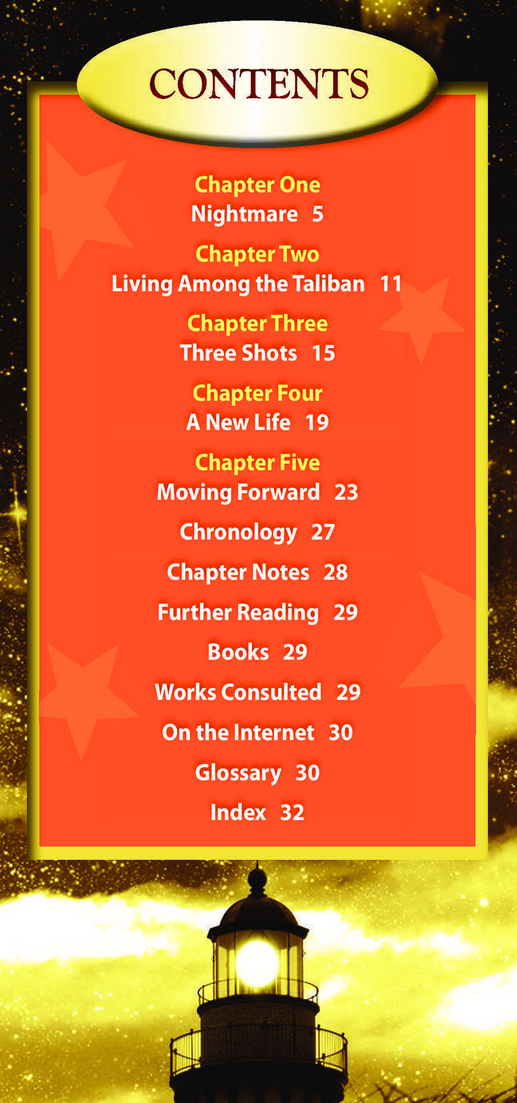
(Source: Reusser, Kayleen. Malala - A Beacon Biography. Purple Toad Publishing, 2016, page 3.)
Go to your Learning Guide and answer the Contents questions.

Answers
1. On what page can you find the glossary? 30 (The glossary helps you to find the meaning of important vocabulary. These words are sometimes bold.
2. What is the name of the chapter that starts on page 19?
A New Life
3. On what page does the chapter called “Living Among the Taliban” begin? 11
More Features
More important text features include:
- Bibliography - A list of books the author and resources used by the author to gather information.
- Bold print / coloured print - Draws attention to vocabulary. If a book has a glossary, the bold words are new and important words that can be found there.
- Bullets - Bullets can be dashes, circles (like the ones at the start of each idea on this list), letters, or numbers. Bullets organize and separate ideas in a list.
- Caption - The words next to or under a picture that tell what the picture is about.
- Graphic aids - all help the reader to visualize the text.
- Maps
- Diagrams (pictures, often labelled, that show parts of something)
- Charts
- Graphs
- Illustrations (hand drawn pictures)
- Heading - Tells the reader what a section or article is about.
- Photograph - Shows how something looks in "real life".
- Sidebar - Gives extra information usually in a box to one side of the page. (The orange arrow below points to a sidebar.)
- Subheading - Helps the reader "chunk" ideas into smaller parts that are related to the heading.
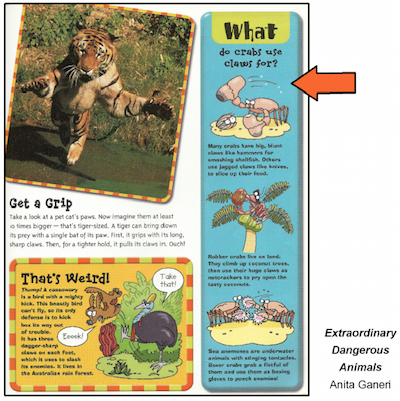
Identify and Define Each Feature
Identify each feature (A, B, C, and D) and write a definition for each in your Learning Guide.
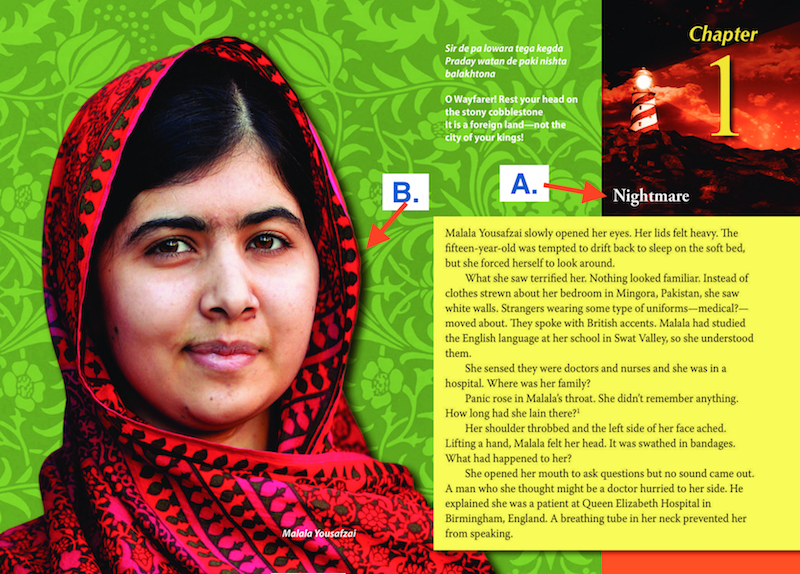
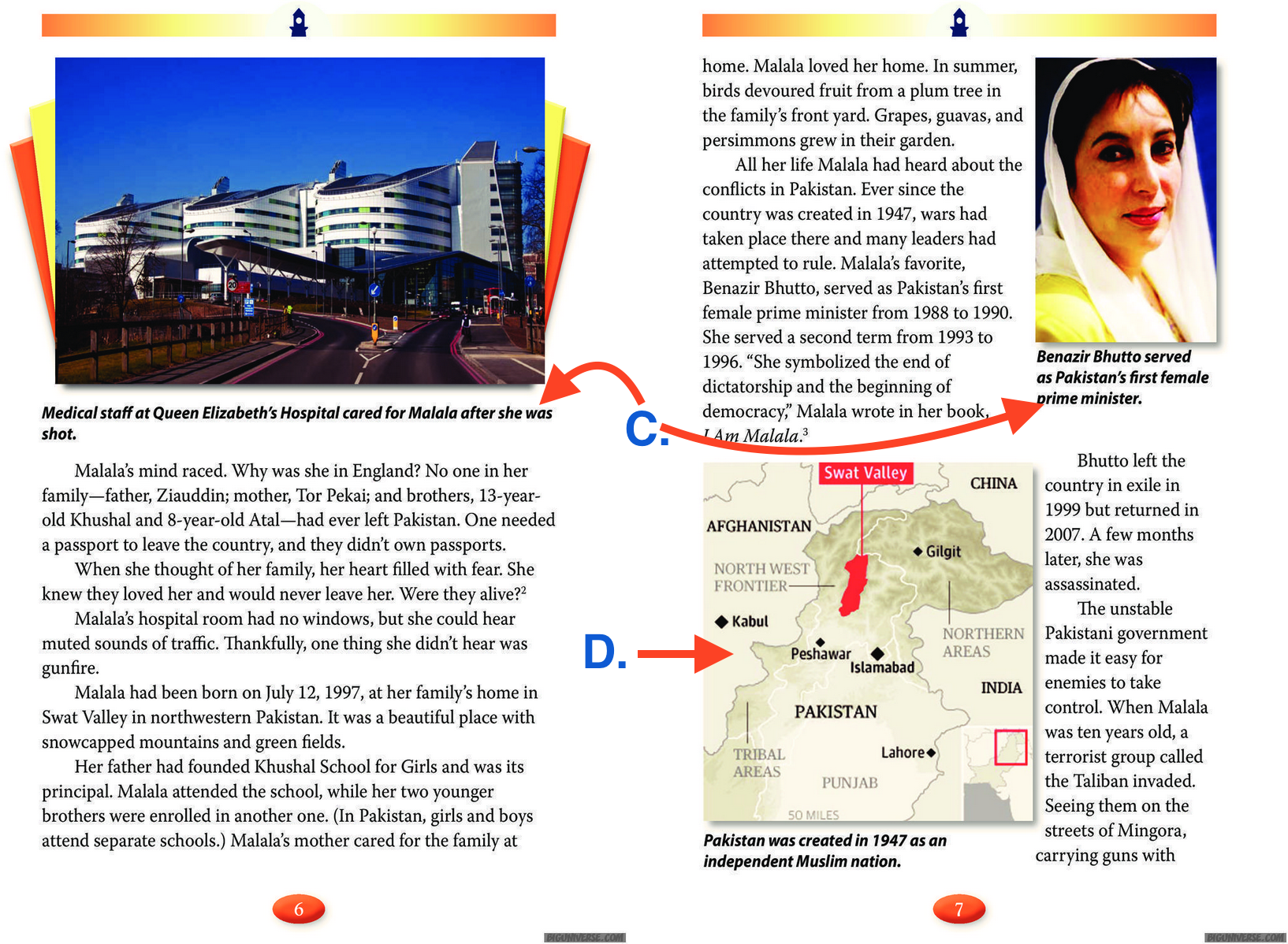
(Source: Reusser, Kayleen. Malala - A Beacon Biography. Purple Toad Publishing, 2016, pages 5 - 7.)
Go to your Learning Guide and answer the Identify and Define the Text Feature prompts.

Answers
IDENTIFY: DEFINE:
Answers may vary somewhat but here are the main ideas
A. Heading - Tells the reader what a section or article is about.
B. Photograph - Shows how something looks in "real life".
C. Caption - The words next to or under a picture that tell what the picture is about.
D. Map - Helps the reader to visualize the text or understand where the event is taking place.
Glossary
A glossary lists new or important words in alphabetical order and tells you what they mean. These words are often in bold throughout the book. Use the glossary below to answer questions in your Learning Guide.
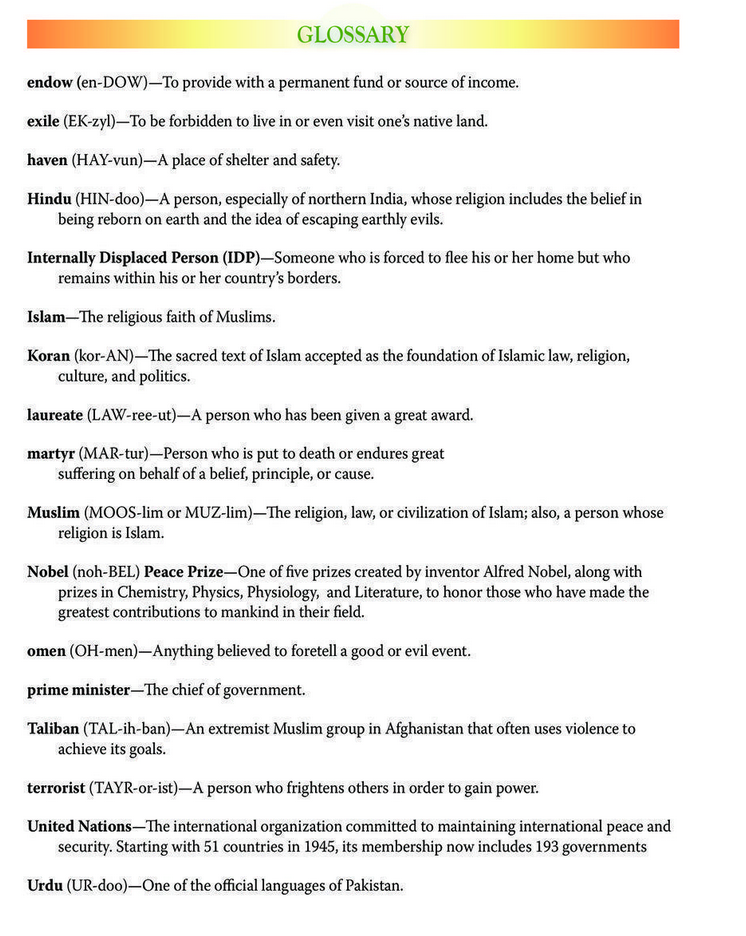
(Source: Reusser, Kayleen. Malala - A Beacon Biography. Purple Toad Publishing, 2016, page 31.)
Go to your Learning Guide and answer the Glossary questions.

Answers
A. When Malala was shot, she survived great suffering and became a martyr for her cause – education for females.
B. Because Malala’s home was no longer safe for her, she was moved to a safe haven.
C. Malala won the Nobel Peace Prize because of her contributions to the fight for equal education rights for females.
Index
An index is similar to a table of contents except:
- it is much more detailed than a table of contents.
- it is in alphabetical order.
If you want to find out something very specific, it is a very helpful feature. Use the index below to answer questions in your Learning Guide.
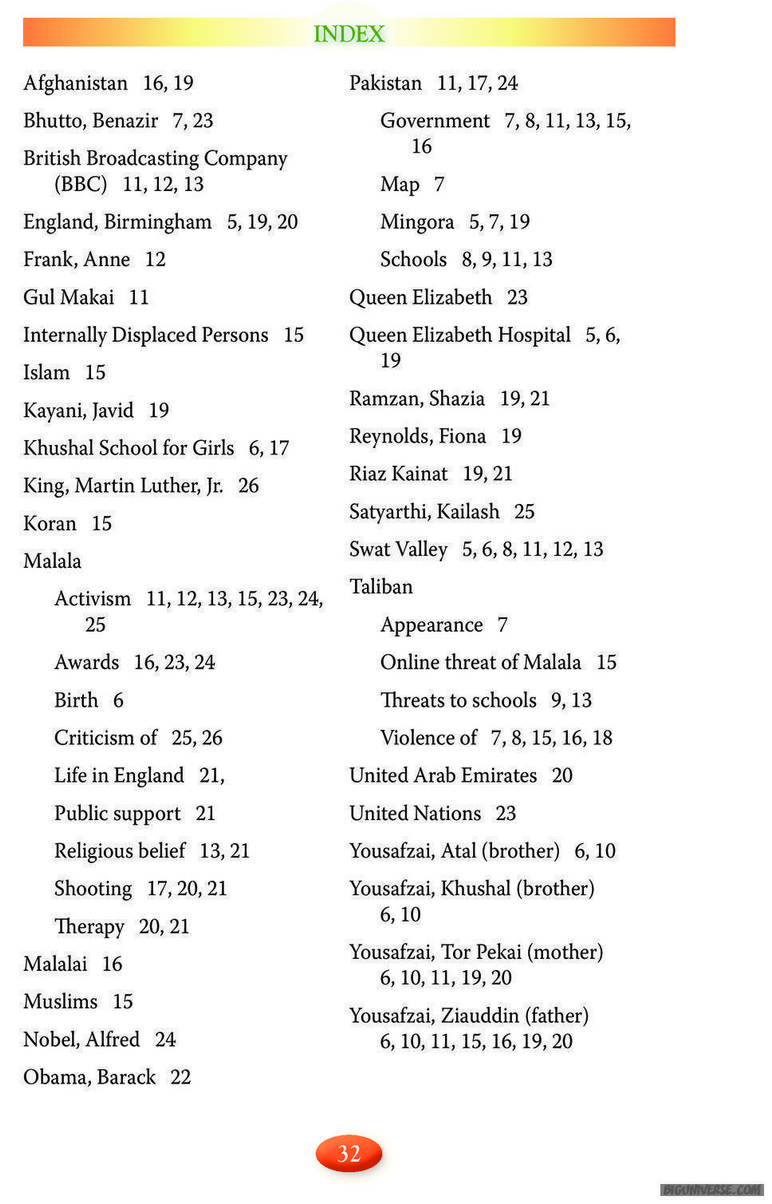
(Source: Felix, Rebecca. 12 Things To Know About Space Exploration. North Mantanko, MN: Peterson Publishing Company, 2015, page 32.)

Answers
A. You’ve heard that Malala has been compared to Anne Frank. To find out more about this, you’d look on page 12.
B. You’d like to know more about schools in Pakistan. You’d look on pages 8, 9, 11, and 13.
C. What would you find out about on page 23? Criticism of Malala and Martin Luther King Jr.